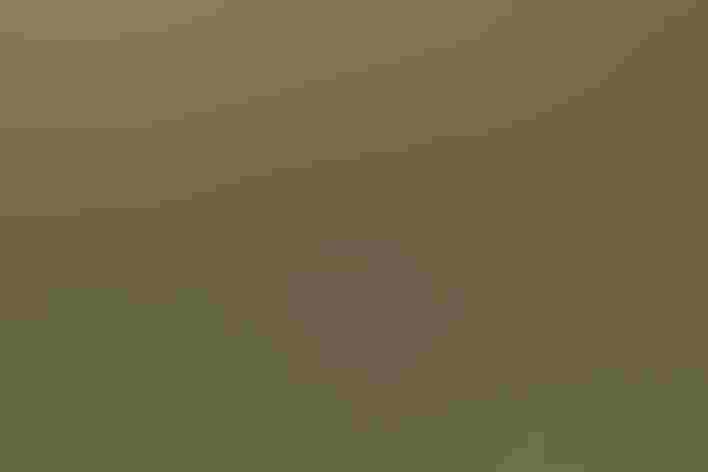Greater White-fronted Goose
At a Glance
In North America, this gray goose is found mainly west of the Mississippi River. Nesting on Arctic tundra, it winters in open country in mild climates. Wintering flocks leave night roosts before sunrise to fly to feeding areas, and musical gabbling and honking can be heard from wavering lines of White-fronts passing overhead at dawn. Included in this species is a large, dark form known as the 'Tule Goose,' nesting in southern Alaska and wintering in central California marshes.
All bird guide text and rangemaps adapted from Lives of North American Birds by Kenn Kaufman© 1996, used by permission of Houghton Mifflin Harcourt Publishing Company. All rights reserved.
Category
Duck-like Birds, Ducks and Geese
Conservation
Low Concern
Habitat
Coasts and Shorelines, Fields, Meadows, and Grasslands, Freshwater Wetlands, Lakes, Ponds, and Rivers, Saltwater Wetlands, Tundra and Boreal Habitats
Region
Alaska and The North, California, Eastern Canada, Florida, Great Lakes, Mid Atlantic, New England, Northwest, Plains, Rocky Mountains, Southeast, Southwest, Texas, Western Canada
Behavior
Direct Flight, Formation
Population
5.500.000
Range & Identification
Migration & Range Maps
A long-distance migrant. Migrates by day or night. Follows established routes and relies on traditional stopover points on migration. Birds nesting in Greenland migrate east over North Atlantic, wintering mainly in Ireland; rarely stray to northeastern North America.
Description
27-30" (69-76 cm). Adult has white band around base of bill, variable black barring on belly. Young bird in fall is all gray-brown; separated from immature blue-morph Snow Goose by pale bill and legs, white on rump. Some domestic geese resemble White-fronts. Some stray White-fronts on Atlantic Coast are from Greenland, slightly more orange on bill (difference is hard to see).
Size
About the size of a Heron, About the size of a Mallard or Herring Gull
Color
Black, Brown, Gray, Orange, Pink, White
Wing Shape
Long, Narrow, Pointed, Tapered
Tail Shape
Rounded, Short, Square-tipped
Songs and Calls
A distinctive bark: kla-ha! or kla-hah-luk!
Call Pattern
Flat, Simple
Call Type
Odd, Raucous
Habitat
Marshes, prairies, fields, lakes, bays; tundra in summer. Generally in open country; most spend winter where agricultural fields (for foraging) are close to extensive shallow waters (for roosting). Breeds on tundra, both wet coastal areas and drier inland tundra. "Tule Goose" breeds in wet open sloughs and bogs in spruce forest region, winters mainly in marshes.
Sign up for Audubon's newsletter to learn more about birds like the Greater White-fronted Goose
Behavior
Eggs
3-6, sometimes 1-8. Dull white, becoming nest-stained. Incubation is by female only, 22-27 days.
Young
Can walk and swim well shortly after hatching. Both parents tend young, leading them to feeding areas; young feed themselves. Age at first flight 38-45 days. Young remain with parents for first year of life and often are loosely associated with them for several years.
Feeding Behavior
Forages while walking on land by grazing and picking up items from ground. In water, submerges head and neck, or upends with tail up and head straight down.
Diet
Mostly plant material. In winter, mostly eats seeds and waste grain in fields, also grazes on new growth. In summer, eats stems and roots of grasses, sedges, horsetail, and other plants, also berries and buds. Eats a few aquatic insects and sometimes snails, possibly swallowed accidentally along with plants.
Nesting
Usually first breeds at age of 3 years. "Triumph display" important in pair bond: male briefly attacks some other bird, then returns to female with neck outstretched and wings partly open, and both male and female call loudly. Nest site is on ground, usually near water, generally surrounded by grasses, sedges, low shrubs. Nest (built by female) is shallow depression lined with plant materials, with down added near end of egg-laying.
Climate Vulnerability
Conservation Status
Total population in North America fluctuates. Apparently declined in 1970s, increased again in late 1980s and later. Status of "Tule Goose" poorly understood, may be vulnerable because of small numbers and limited range.
Climate Threats Facing the Greater White-fronted Goose
Choose a temperature scenario below to see which threats will affect this species as warming increases. The same climate change-driven threats that put birds at risk will affect other wildlife and people, too.






